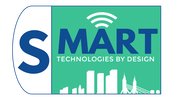|
The article is a continuation of the series of articles for disruptive technologies for smart cities we started publishing in April, 2020. The article is based on the outputs produced by partners under the project Smart Technologies by design (Smart by Design) and is the last from these series. It was found that there are many digital and/or data-based technologies that are to a large extend applicable in the real conditions of the city and contribute to its coping with public problems or challenges. They are used in diverse areas like transport, energy, utility, urban, health, etc. These technologies are called smart city technologies and the main purpose of the Smart Technologies by Design project has been to map and select eleven technologies that refer (to the greatest extent) to the concept of a smart city and have already been implemented in diverse areas of application of one city. This article presents Virtual reality. DescriptionVirtual reality (VR) is a three-dimensional, computer-generated environment that people can explore and interact with. This technology places the user in a new experience; immersing them and making them interact with a new 3D world. The main purpose of VR resides in simulating as many senses as possible, like vision, hearing, touching, and even smelling. It is very common to mix VR with the Augmented Reality (AR). While AR simulates artificial objects in a real environment, VR creates a fully artificial environment for the interaction of users. In order to achieve a full VR experience, it has to correspond with the following aspects:
As there are some technologies that do not respond in the same way like the previous requirements, there are different types of VR:
Current StatusPlatforms Some of the best-known providers of VR technology providers are: Moreover, currently, VR needs some special glasses or Head-mounted displays (HMD) in order to create the virtual world. Some of those glasses are: Existing Standards There are already some international standards for VR applications:
Key Applications VR is a technology that is used in a lot of different types of applications:
Expected EvolutionPlatforms It is obvious that Virtual Reality is one of the most promising technologies for the future. Firms will continue trying to send users to new places that have not been before and providing new solutions to multiple sectors. VR is originally linked to the gaming and entertainment industries but it will also influence other fields. For example, students will be able to explore historical places immersing them in virtual worlds. Even if it seems a very difficult approach in the short term, new platforms and solutions will be developed in order to improve and evolve Virtual Reality towards a more realistic and affordable technology. The idea is that the future of VR will involve more than headsets and controllers, it is expected to be more physical. It will be more sensory-oriented than nowadays, which is more focused on the visual sense. Next devices are expected to introduce much better touch controls, temperature change or smells, making them more complete reality simulators. Standards There are already some standards established in VR. But, as mentioned above, there are lots of working groups conducting new projects with the objective of placing new standards. Some of the most relevant ones are:
Potential Applications in the Future As it is a very cross-sectorial technology that can be applied to most sectors, countless applications will be developed in the future. Some of those can be next ones:
Sources
|
AuthorSmart by Design Archives
September 2021
Categories
All
|
|
The SMART by Technologies Design project [SMART by Design] Project No. 2019-1-BG01-KA202-062298 has been co-funded by the Erasmus+ Programme of the European Union.
This website reflects the views only of the author, and the European Commission cannot be held responsible for any use which may be made of the information contained therein |
SMART BY DESIGN |
SUPPORT |
Copyright ®2020 SMART BY DESIGN. All rights reserved.


 RSS Feed
RSS Feed
